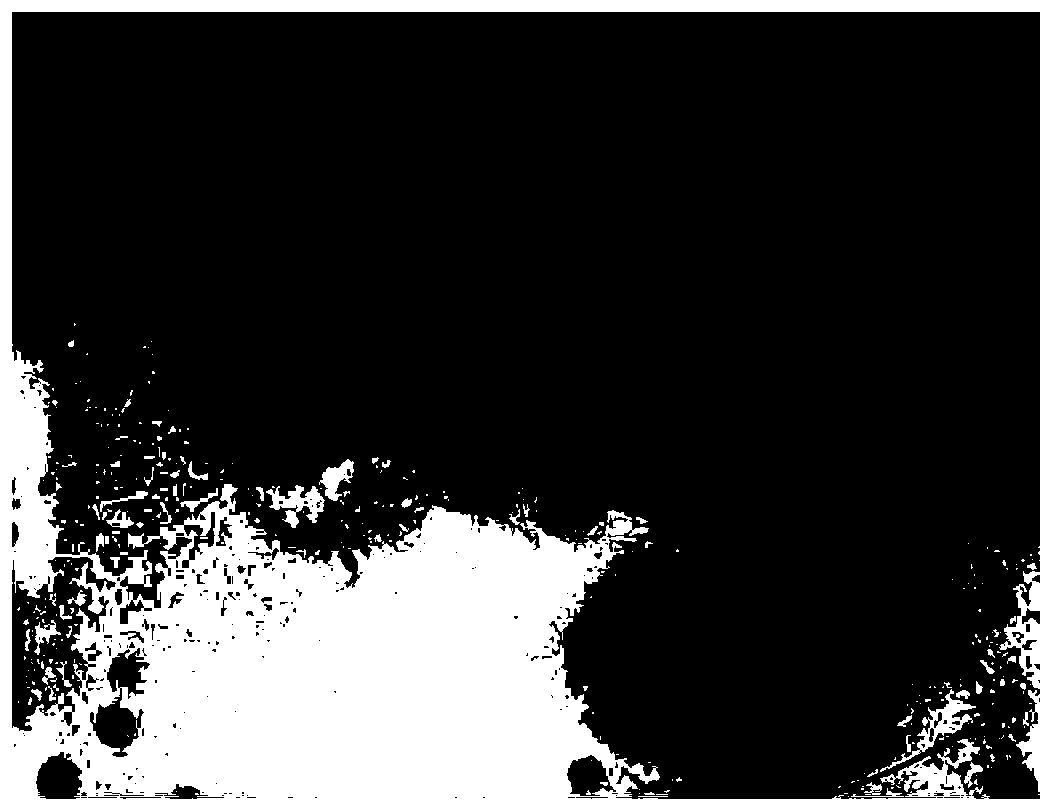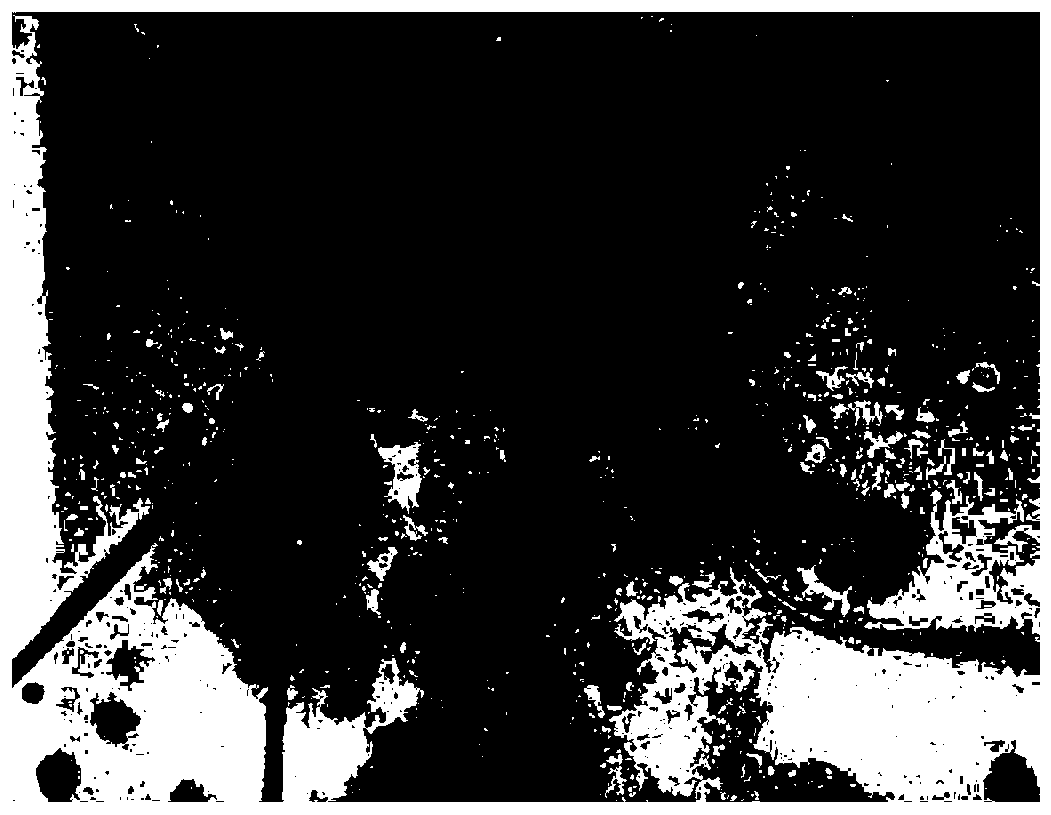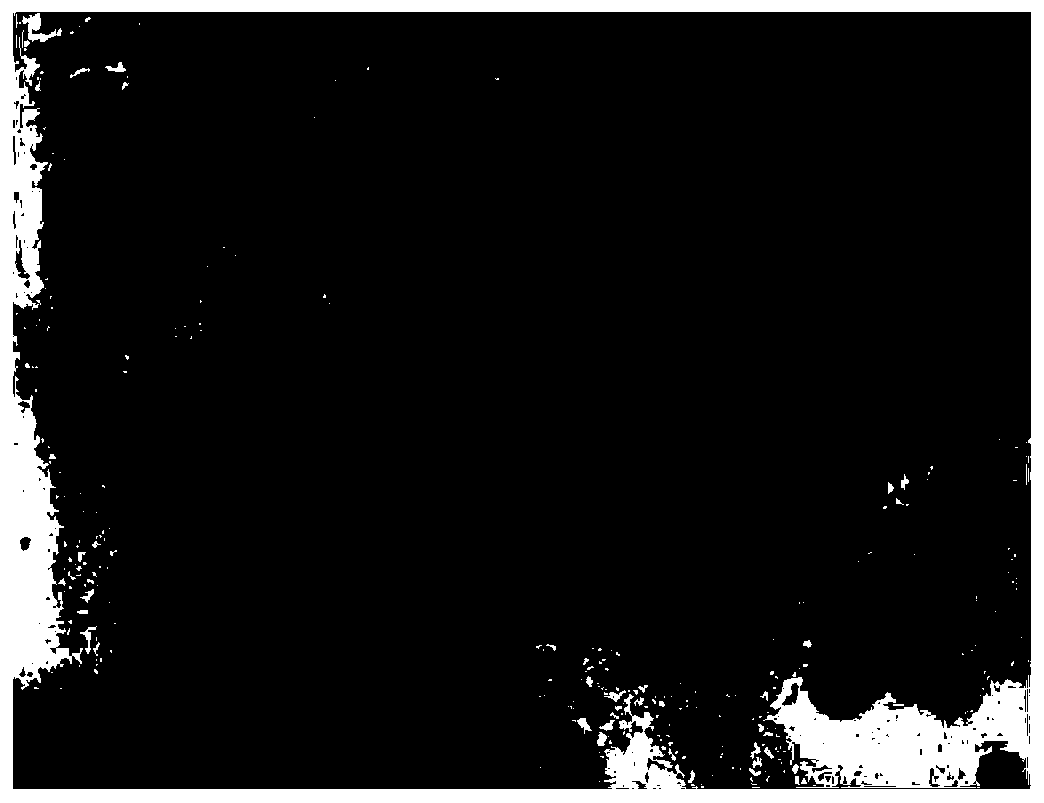Method for controlling cyanophyta microcystis bloom and portable treatment system
A treatment system and technology of Microcystis, applied in biological water/sewage treatment, water/sludge/sewage treatment, chemical instruments and methods, etc., can solve secondary pollution, cannot be cleaned in time, cyanobacterial blooms are time-consuming and labor-intensive, etc. problem, to achieve the effect of good effect, effect and stability, and simplified operation process
- Summary
- Abstract
- Description
- Claims
- Application Information
AI Technical Summary
Problems solved by technology
Method used
Image
Examples
Embodiment 1
[0061] Prepare the biofloc in advance, which is cultivated in the fish tank (can obtain activated sludge from the sewage treatment plant instead), and add the biofloc in three 60cm × 40cm × 40cm colorless transparent glass tanks, The addition amount is based on the half-hour settling time, and the addition amount of biofloc in each tank is about 30mL / L. The way to add the initial biofloc is to take out the cultivated biofloc from the original water body and put it in a plastic bucket for about 1 hour, remove the supernatant to obtain the biofloc particles that sink to the bottom, and then put Pellets were added to glass jars and concentration adjustments were made. The initial biofloc was light brown in color, and the particles were mainly brown bacterial populations, with a small amount of algae and protozoa.
[0062] At the end of June at high temperature, fish fresh cyanobacteria Microcystis blooms from the breeding ponds where cyanobacteria blooms occurred, and transfer t...
Embodiment 2
[0067]Prepare biofloc in advance, which is obtained by rotten cultivation of fish compound feed and aquaculture wastewater, in two 60cm×40cm×40cm colorless transparent glass cylinders (adding medium and high concentration microcapsules later) Algae bloom), a 600L white cylinder with a diameter of 1m (later added low concentration of Microcystis bloom), add biofloc, the amount added is based on the settling time of half an hour, the biofloc in each tank The added amount is about 85mL / L. The way to add the initial biofloc is to take out the cultivated biofloc from the original water body and put it in a plastic bucket for about 1 hour, remove the supernatant to obtain the biofloc particles that sink to the bottom, and then put Pellets were added to glass jars and concentration adjustments were made. The initial biofloc is light brown, and the particles are mainly brown bacterial groups, including a small amount of algae, protozoa, rotifers, etc.
[0068] At the beginning of hi...
Embodiment 3
[0074] The biofloc was prepared in advance and grown in the tilapia culture system in the greenhouse. Add biofloc in 2 colorless transparent plexiglass columns with a column height of 1m and a diameter of 40cm (the bottom of the column is hemispherical, and the spherical diameter is 40cm). The amount of addition is based on the settling time of half an hour. The initial addition amounts were 20mL / L and 50mL / L respectively, that is, two gradient bioflocs of low concentration and high concentration were formed. The method of adding the initial biofloc is to take out the cultivated biofloc from the original water body and place it in a plastic bucket, remove the supernatant to obtain the biofloc particles that sink to the bottom, and then add the biofloc particles Add tap water to the plexiglass column to obtain biofloc water, and adjust the concentration of biofloc. The initial biofloc was light brown in color, with mainly brown bacterial populations in the particulate matter, ...
PUM
 Login to View More
Login to View More Abstract
Description
Claims
Application Information
 Login to View More
Login to View More - R&D Engineer
- R&D Manager
- IP Professional
- Industry Leading Data Capabilities
- Powerful AI technology
- Patent DNA Extraction
Browse by: Latest US Patents, China's latest patents, Technical Efficacy Thesaurus, Application Domain, Technology Topic, Popular Technical Reports.
© 2024 PatSnap. All rights reserved.Legal|Privacy policy|Modern Slavery Act Transparency Statement|Sitemap|About US| Contact US: help@patsnap.com










